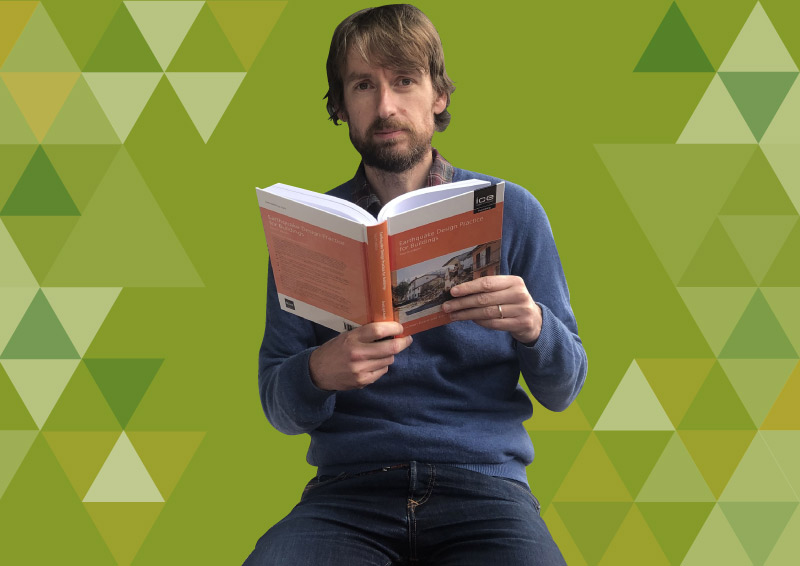The author of Earthquake Design Practice for Buildings: Fourth edition, reveals why he chose civil engineering as a profession, and how he coped with book writing in the first lockdown.

- Updated: 09 Feb 2021
- Author: Damian Grant, Arup, UK
What inspired you to work in civil engineering?
I confess, it wasn’t until my 2nd or 3rd year at university that I really understood what a civil engineer does – despite having one for a father. Engineering seemed a good practical profession involving maths and physics, and I probably defaulted to civil because of my dad (even if I seem to remember him trying to steer me towards electrical).
What does writing a book entail?
Probably the biggest thing was keeping a consistency in effort throughout the 18 months or so I was working on the text. I, fairly consistently, carved out three sessions of research or writing per week, and only took a few short breaks for holidays. My final three-month stretch coincided with the first Covid-19 lockdown, so I was extra thankful I’d got myself within pouncing distance of the finishing line by this point! Of course, I was lucky to have the previous edition of the book to work from, and the support of its author, Edmund Booth, as my co-author on this edition.
What is the best part of writing a book?
Seeing it in print at the end! It’s a very satisfying feeling to see all the photos, figures and text all professionally bound up in a hard cover book with my name and Edmund’s up top. The journey was satisfying too, but I can’t deny that the feeling of finishing was best of all!
And the worst…? What was the biggest challenge you faced?
Putting the finishing touches on the text (by which I mean two whole chapters!) during the first Covid-19 lockdown was a real challenge, as all my well-established routines went out the window. A shout-out to my wife here, who helped out a lot with looking after our 3-year-old daughter while I blissfully typed away listening to forest sounds through noise-cancelling headphones!
What will the reader learn from Earthquake Design Practice for Buildings, Fourth edition?
The book is designed to be a bit of a one-stop shop for all things earthquake engineering, so I hope there’ll be a little something for everyone. The content from the fourth edition that, I hope, has the biggest impact is the new material on seismic-protective technologies, like seismic isolation, dampers and self-centring devices. These were all covered in previous editions, but the new presentation will give a fresh take, and perhaps encourage engineers to employ them on their projects.
How do you take your tea?
I hope they don’t revoke my British citizenship if I admit I don’t drink the stuff! Give me fancy coffee any day, preferably something with a £3+ London price tag.
If you could invite any engineer (alive or dead) to dinner, who would it be?
After a year of cancelled conferences and travel restrictions, it’s tempting to choose an engineering friend, colleague or family member. But I’ll go with Professor Nigel Priestley, the great Kiwi earthquake engineer, who sadly passed away six years ago. He was a co-founder of the ROSE School post-graduate programme in Italy, where I studied, and a mentor. Nigel was a brilliant engineer, researcher and teacher, with many interests outside engineering, such as hiking, sailing, poetry and wine, so he made an entertaining dinner companion. Whenever I find myself getting carried away with the latest analytical or statistical methods, or sharpening my pencil to the nth decimal place, I try to ask myself “What would Nigel do?”, and inevitably my thinking takes a turn for the more practical.
Damien Grant’s book, Earthquake Design Practice for Buildings: Fourth edition, is available in print and as an eBook.
If you are interested in writing a book, find out more about working with us on our book author hub.
